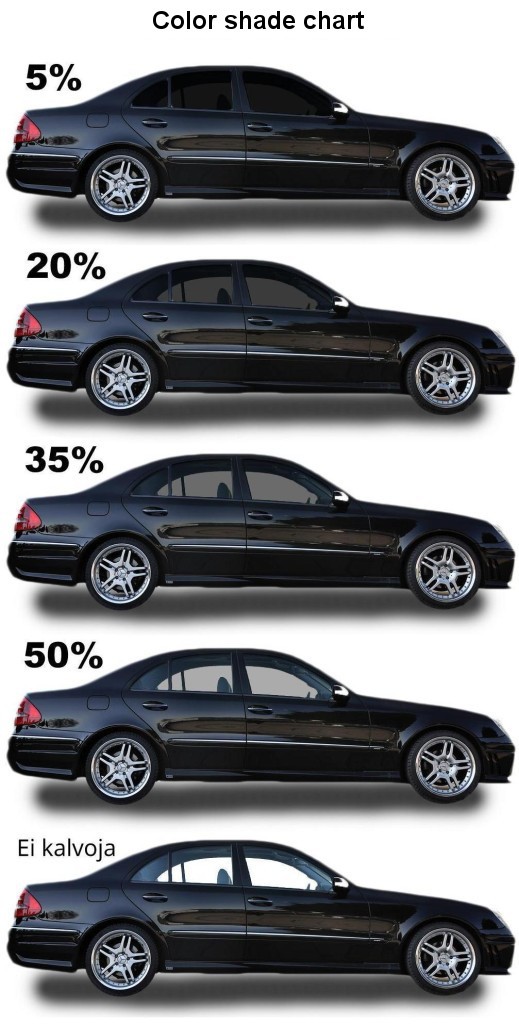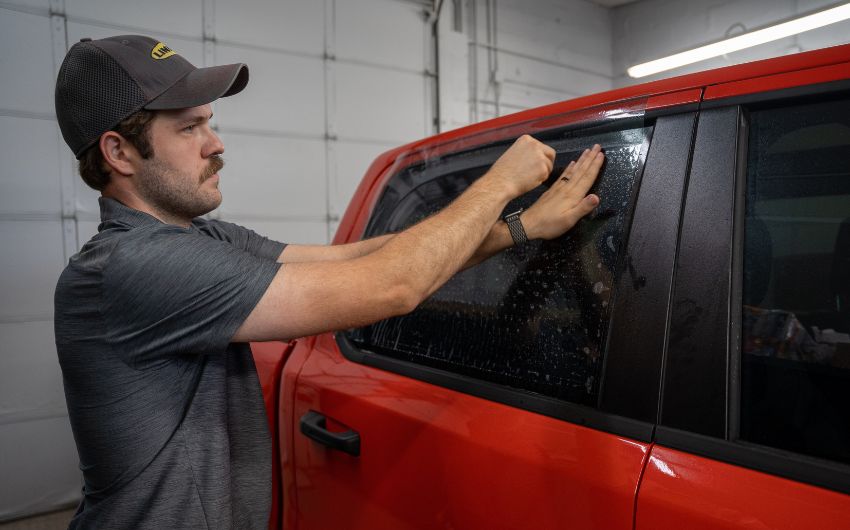The Science Behind Car Window Tinting and UV Ray Protection
The Science Behind Car Window Tinting and UV Ray Protection
Blog Article
Window Tinting Laws and Standards: What You Required to Know Prior To Tinting Your Auto
Prior to waging window tinting for your lorry, it is necessary to familiarize yourself with the varied regulations and guidelines that control this method across various states. These guidelines determine the acceptable levels of color darkness, commonly determined by visible light transmission (VLT) portions, and consist of specific terms for front windscreens aimed at ensuring roadway safety and security. Additionally, particular jurisdictions may use clinical exceptions for individuals with certifying problems. Comprehending these complexities can conserve you from possible legal ramifications, but what are the particular guidelines in your state?
Summary of Home Window Tinting Regulations
Window tinting regulations are often subject to variation across different jurisdictions, showing local policies and safety considerations. These regulations determine the permissible levels of tint darkness and reflectiveness on lorry windows, guaranteeing that motorists maintain sufficient visibility while additionally safeguarding versus dangerous UV rays and heat.
Many policies identify window tinting based upon the Visible Light Transmission (VLT) portion, which indicates the amount of light that can pass with the home window. Normally, lower VLT percentages symbolize darker colors. Laws frequently distinguish in between the front, side, and back windows, with more stringent constraints related to the front windshield to improve safety for both the motorist and various other road customers.
Furthermore, some jurisdictions impose limitations on the reflectivity of the tint, stopping too much glare that might impair visibility. Exemptions to these laws might exist for people with details medical problems calling for extra sunlight security. Compliance with window tinting policies is vital, as infractions can lead to penalties, mandatory elimination of the tint, and possible increases in insurance policy costs. Consequently, it is crucial for lorry proprietors to acquaint themselves with local laws prior to proceeding with home window tinting setups.
State-by-State Color Regulations
Comprehending the details window tinting regulations in each state is essential for car owners seeking to adhere to the law. Each state in the united state has established its very own set of rules governing window tinting, which can vary significantly. These guidelines frequently determine the allowable degrees of tint darkness, the kinds of windows that can be tinted, and any clinical exemptions that may use.
As an example, states like The golden state have rigorous limitations on tint darkness for front windows, while others, such as New Mexico, might enable darker tints. In addition, certain states mandate specific presence portions for different windows, including the windshield, front side home windows, and rear home windows. It is critical for cars and truck proprietors to familiarize themselves with their state's legislations to stay clear of prospective fines or charges.
Furthermore, some states might call for a certification sticker label to be put on colored home windows, showing conformity with state regulations. Failure to stick to these guidelines not just takes the chance of lawful repercussions however can also impact safety and visibility while driving. Lorry owners need to carry out comprehensive research study or seek advice from regional authorities to make certain full understanding and compliance with state-by-state color policies.
Allowed Tint Types and levels
Lots of car owners might be stunned to find out that allowed tint degrees and types differ extensively throughout different states. Each state has developed its very own laws relating to the permissible darkness and reflectivity of home window tint, typically determined by Visible Light Transmission (VLT) percents. VLT describes the amount of light that can go through the colored windows; therefore, a reduced percentage suggests a darker color.

Moreover, the kinds of tint materials allowed can vary, with some states forbiding mirror-like or metal finishes. It is important for lorry proprietors to acquaint themselves with their state's specific laws to make sure conformity. Non-compliance can result in fines, required elimination of the color, or various other legal consequences, making it important to special info comprehend these guidelines prior to waging setup.
Medical Exceptions for Tinting
While not all states give allowances for medical exceptions pertaining to window tinting, those that do identify the requirement for particular individuals to improve exposure and convenience because of clinical problems. Numerous medical problems, such as lupus, skin cancer cells, and specific eye disorders, can provide people especially conscious sunshine. These people might require darker tints to shield themselves from hazardous UV rays and glare.

It is essential to keep in mind that despite a clinical exemption, there may still be restrictions on the degree of tint permitted. Compliance with state laws guarantees that individuals are both safeguarded and within legal limitations. Those taking into consideration clinical exceptions need to call their regional Department of Motor Cars or equal authority to comprehend the treatments and demands needed to get an exception effectively.
Charges for Non-Compliance
Falling short to follow window tinting legislations can cause substantial penalties, which differ by state. Police are encouraged to issue citations for lorries that do not comply with the defined tinting guidelines. These fines typically include penalties, which can vary from modest total up to numerous hundred bucks, depending on the seriousness of the violation and the state concerned.
In some jurisdictions, duplicated offenses may lead to intensifying fines or added charges, such as obligatory court looks. Non-compliance may require the removal of unlawful tinting, often at the proprietor's cost. In severe cases, habitual culprits may encounter suspension of their vehicle registration until conformity is accomplished.
Furthermore, insurance policy effects may emerge from getting several citations for window color infractions. Insurance firms might check out such offenses as an indication of riskier actions, possibly resulting in raised premiums or problem in view protection.
To avoid these penalties, it is critical for lorry owners to familiarize themselves with their local home window tinting legislations and make sure that their lorry complies (Window Tinting). This aggressive strategy not just avoids lawful implications however likewise advertises road security
Final Thought

Most policies categorize window tinting based on the Visible Light Transmission (VLT) percentage, which suggests the amount of light that can pass via the home window. Compliance with home window tinting regulations is essential, as infractions can result in penalties, required elimination of the tint, and prospective boosts in insurance policy premiums.Understanding the certain window tinting laws in each state is essential for vehicle proprietors seeking to abide with the legislation. These regulations typically determine the permitted levels of tint darkness, the kinds of windows that can be tinted, and any clinical exemptions that might use.
For circumstances, states like California have stringent constraints on tint darkness for front windows, while others, such as New Mexico, might allow darker colors.
Report this page